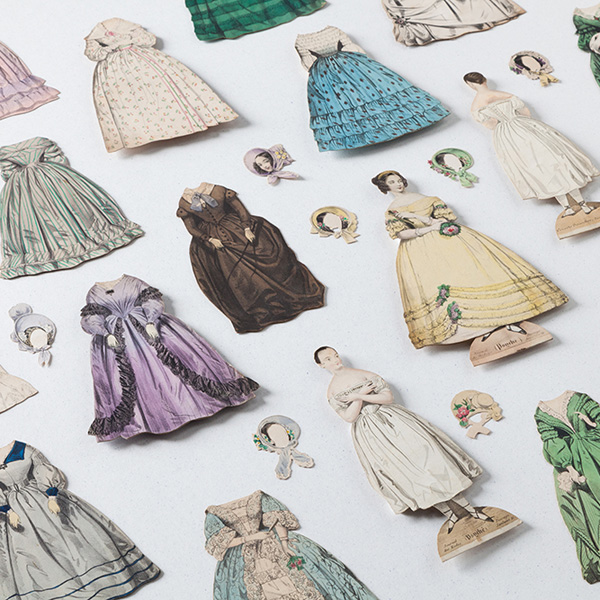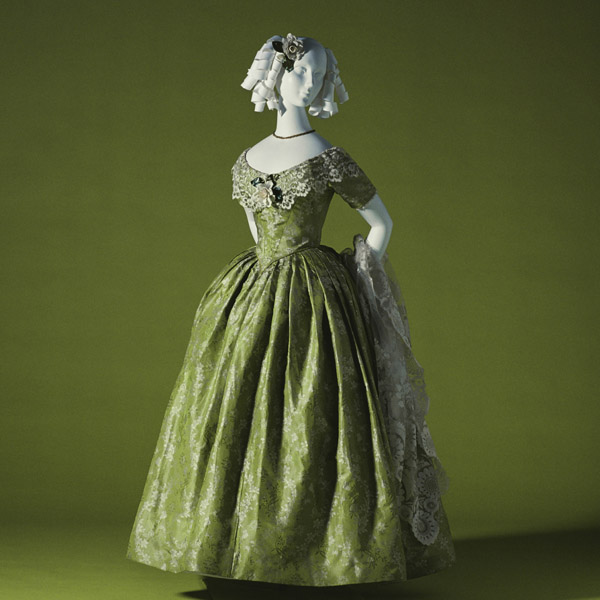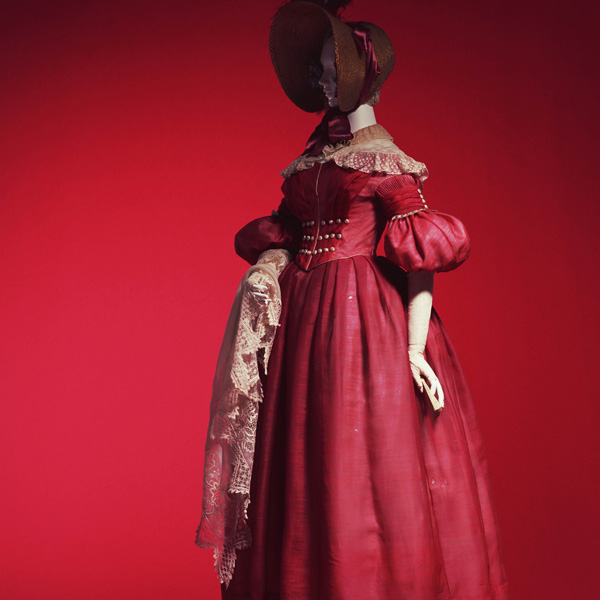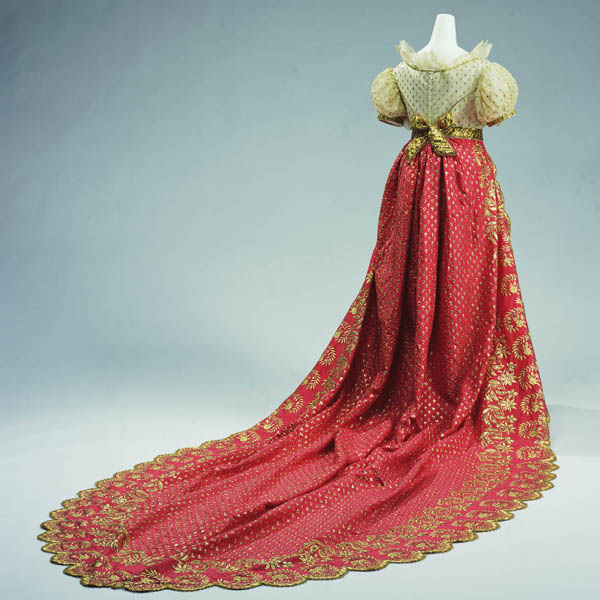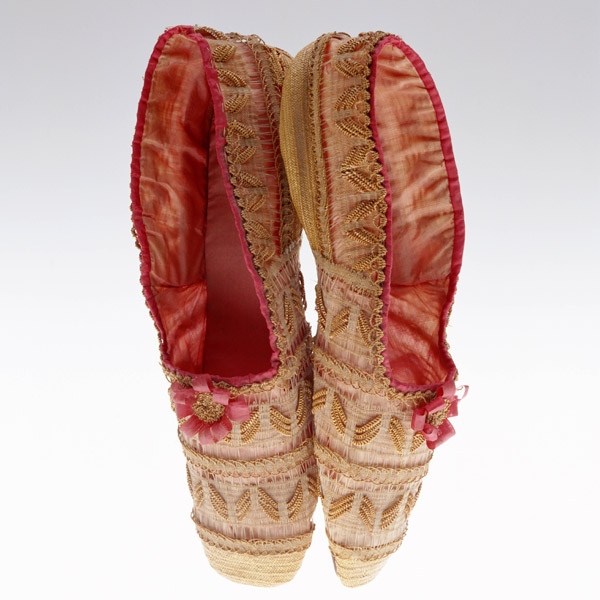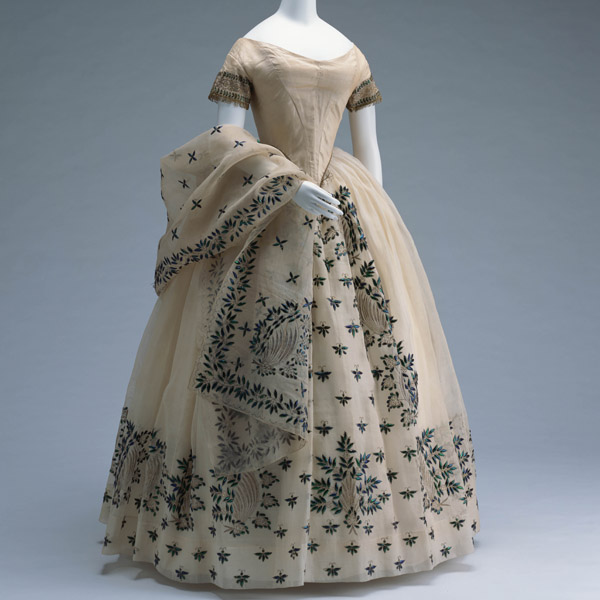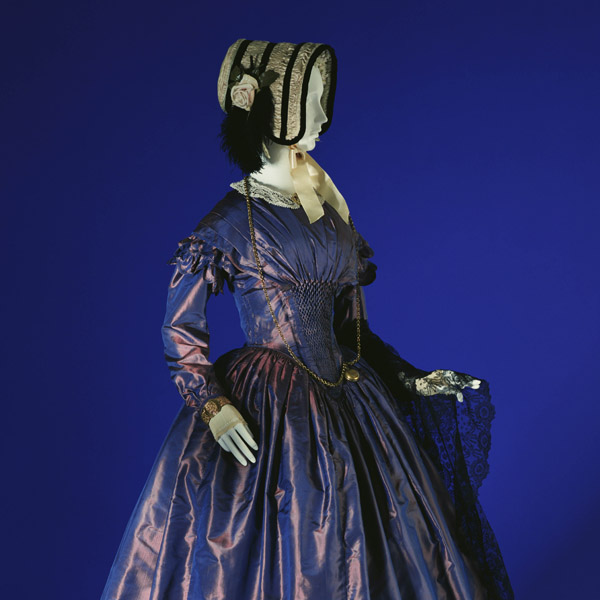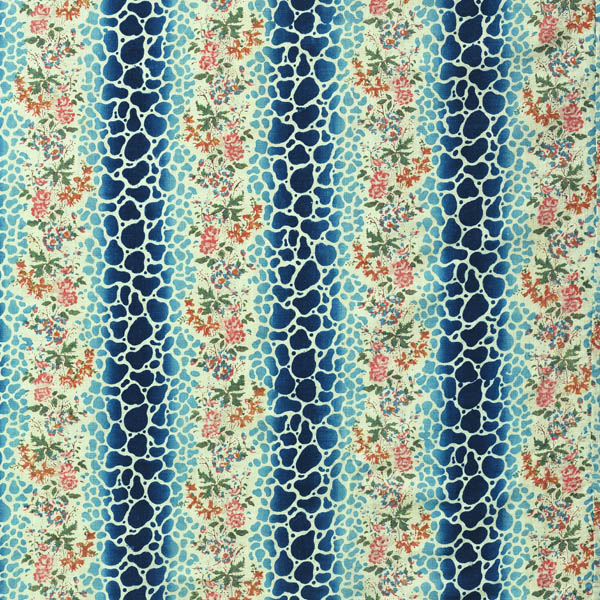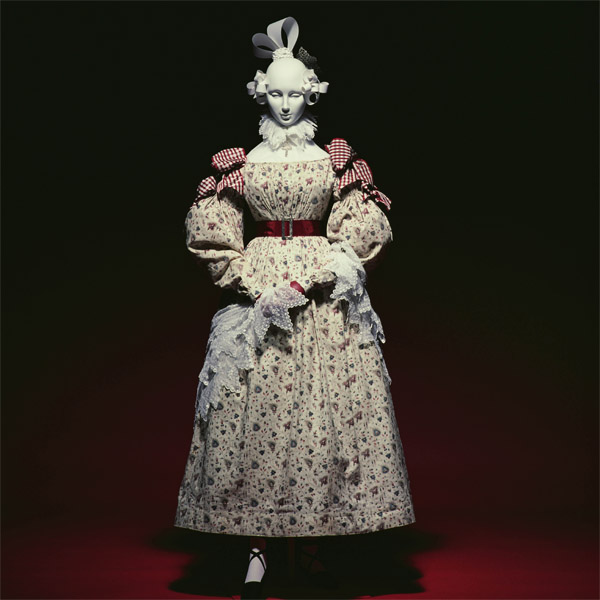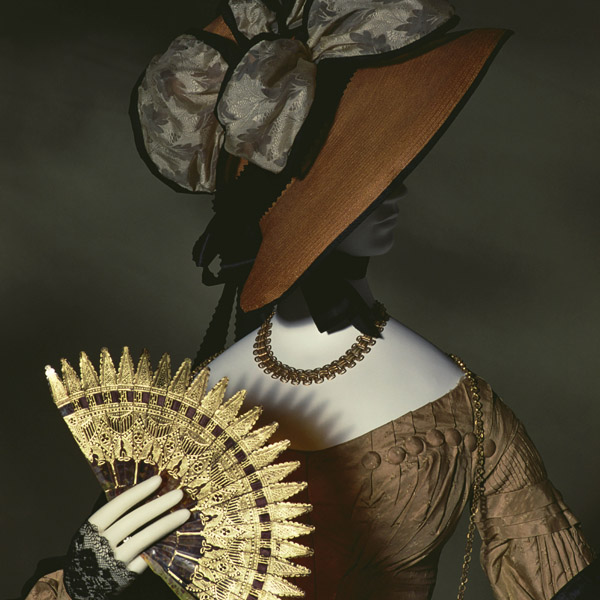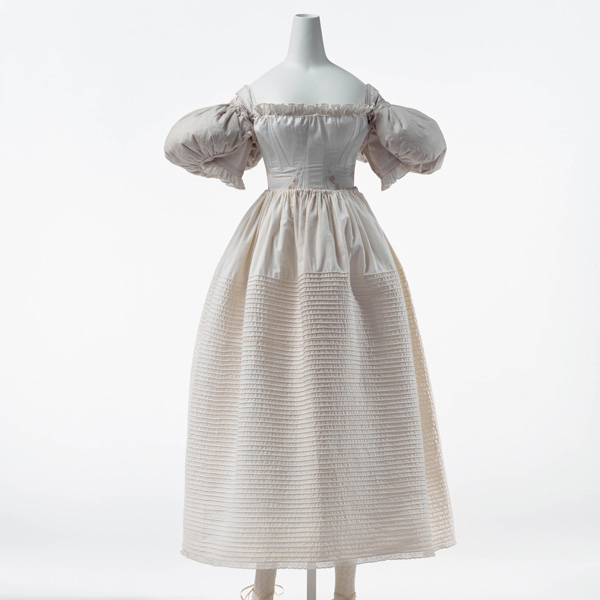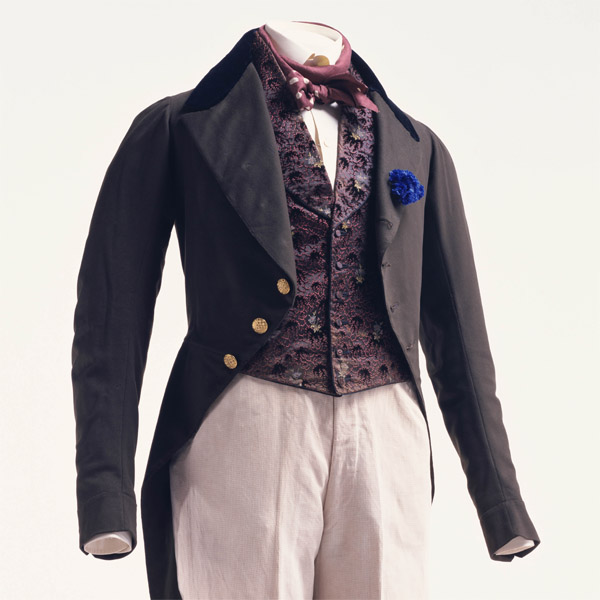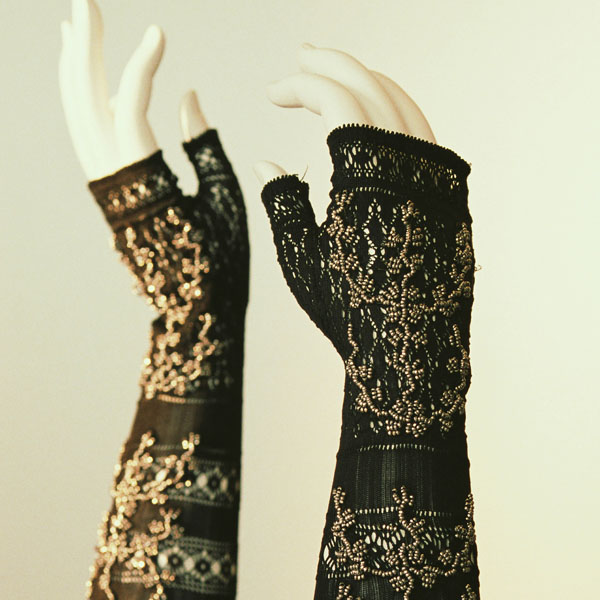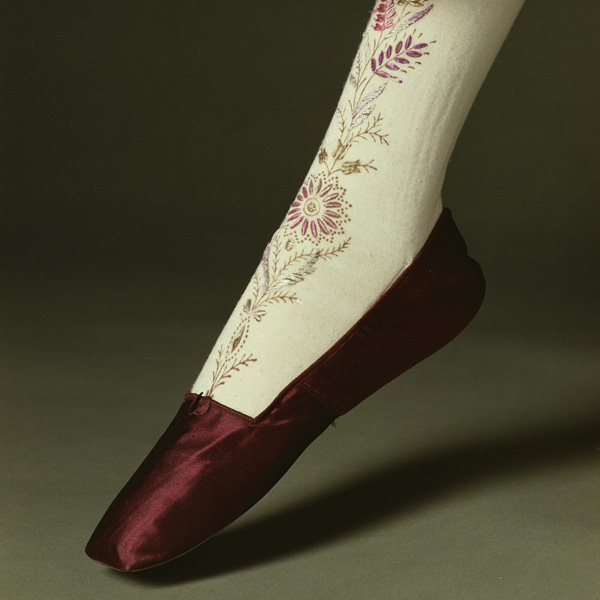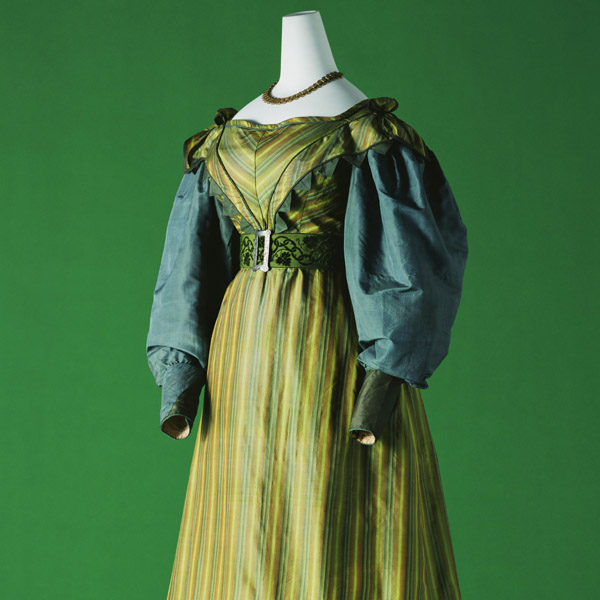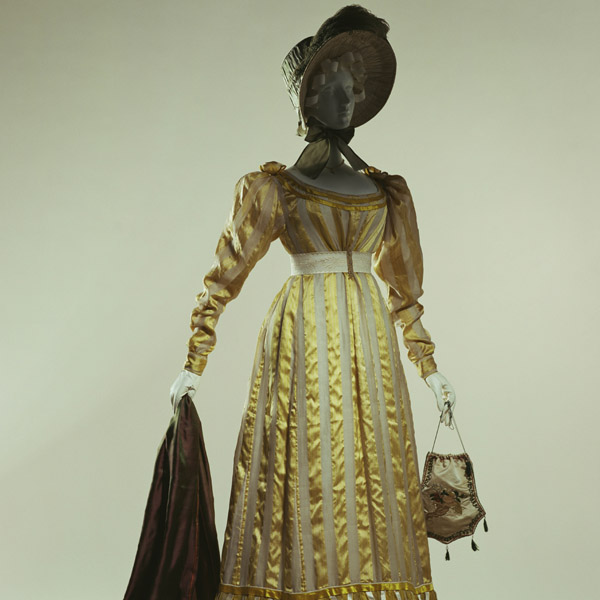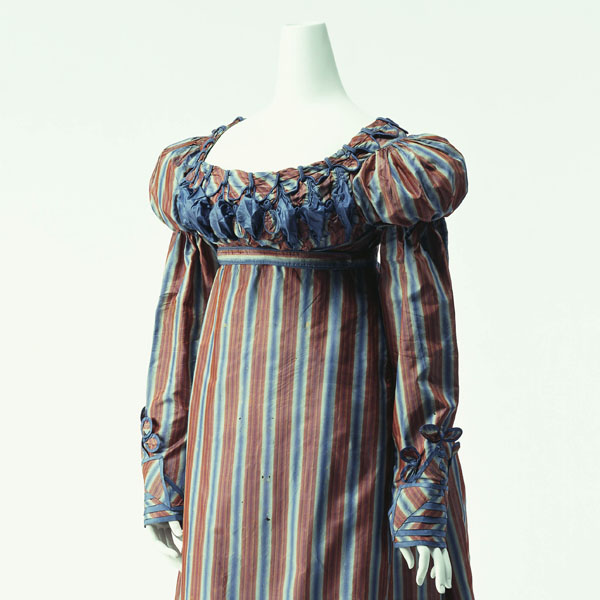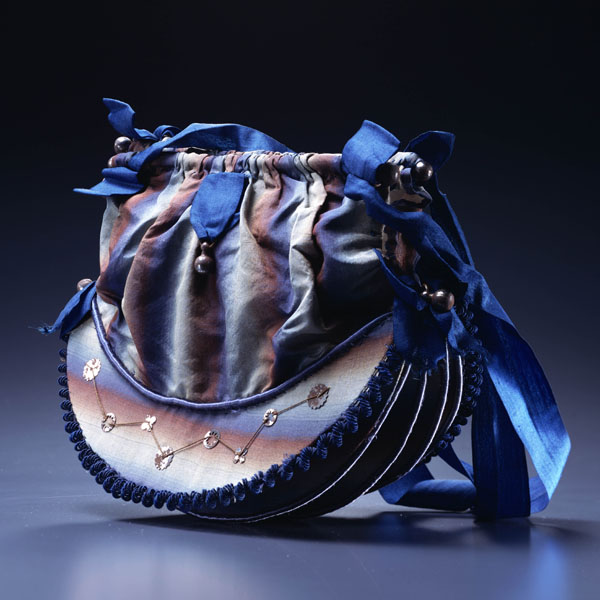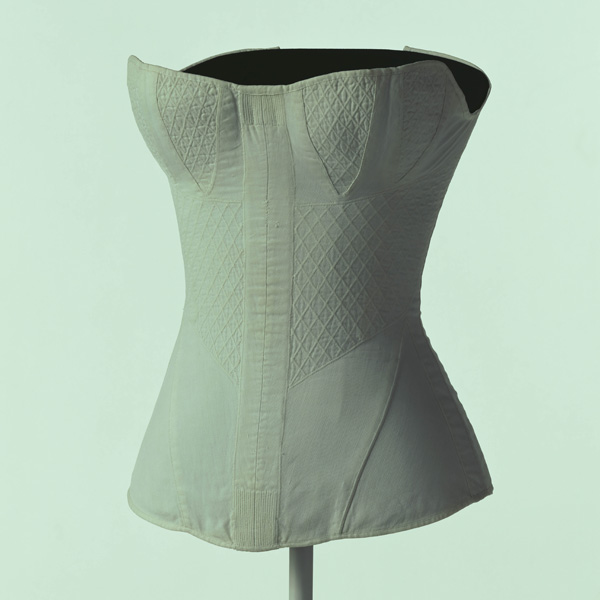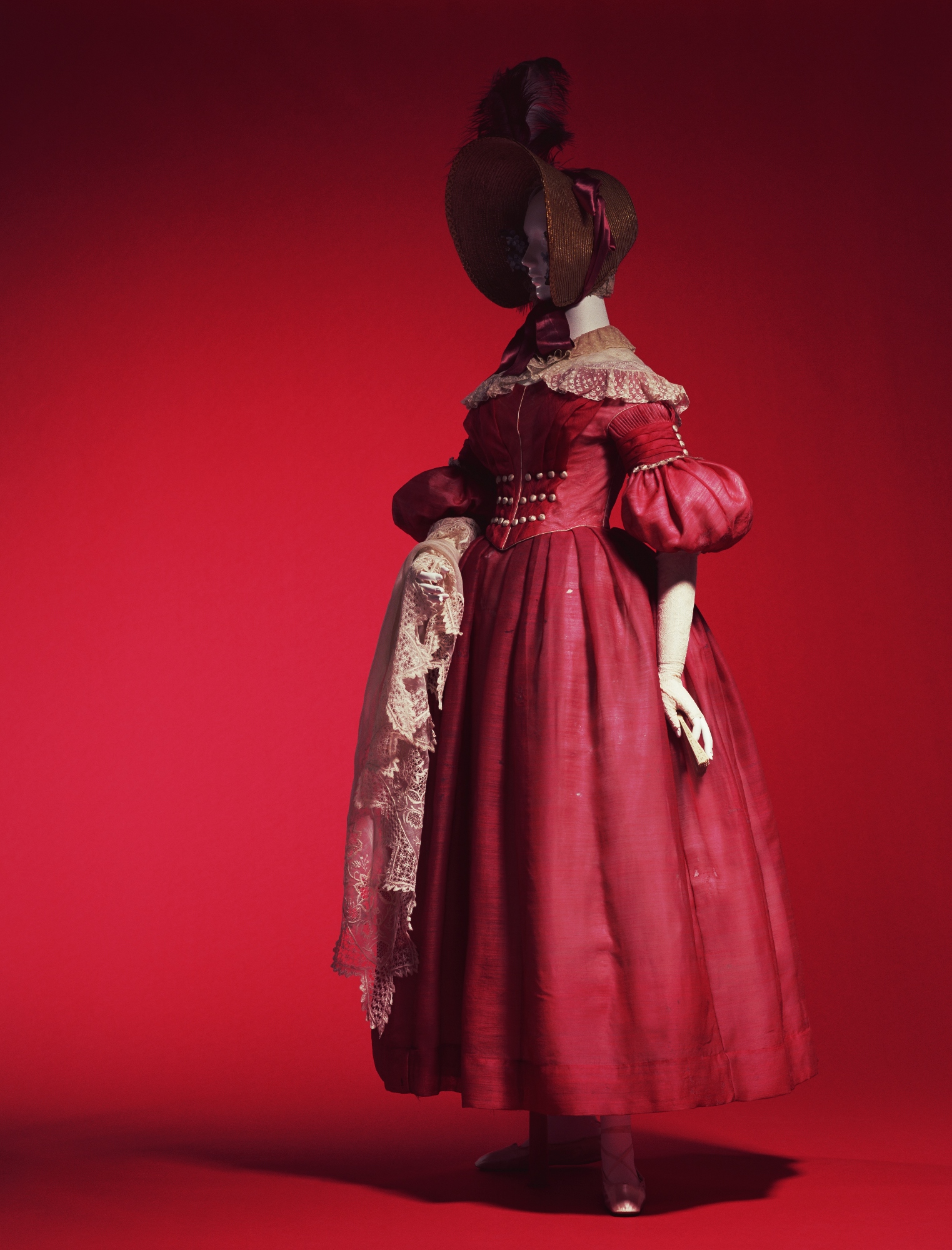
© The Kyoto Costume Institute, photo by Taishi Hirokawa
You can enlarge by putting the mouse cursor on the image.
Day Dress
c.1838 - America
- Material
- Red silk and wool mixed gaze with silk satin piping; wrapped buttons on bodice and sleeves; leg of mutton sleeves; decoration of pleats and insert blonde lace at shoulder.
- Inventory Number(s)
- AC2208 79-9-13
Characteristic day dress featuring a bell skirt and puffed up leg of mutton (gigot) sleeves. The dress is brightly colored, with a low neckline and shoulder line, creating a wide décolleté. The shoulders and hemline of the skirt have visually the same width, producing an X-like line that emphasizes the slender waist. The skirt is short enough to see the ankles, so that embroidered socks and square-toe shoes peep out from the hem. Leg of mutton sleeves first appeared in the 1820s, broadening massively close to the shoulders, and tapering away towards the wrists. In the late 1830s, the sleeves were restrained by ribbons, laces, or decorative pleats, shifting the bulge to the elbow and forearm.
This sort of dress design strongly reflects the beauty and femininity idealized by the romanticism that was at its peak in the 1830s. Romantic artists perceived beauty and femininity in delicate female figures with pale skin and an air of melancholy. Their art tended to be idealistic, drawn to the mysterious, including figures with no physical reality, such as fairies and angels.
 Digital Archives
Digital Archives